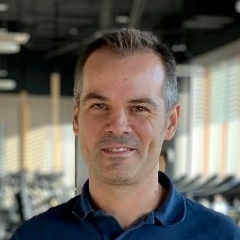The 2nd Edition: Management and Promotion of Healthy Habits and Active Life
A special issue of International Journal of Environmental Research and Public Health (ISSN 1660-4601). This special issue belongs to the section "Health Behavior, Chronic Disease and Health Promotion".
Deadline for manuscript submissions: closed (30 April 2023) | Viewed by 41200
Special Issue Editors
Interests: sport management; sport entrepreneurship; sport consumer; loyalty; fitness industry
Special Issues, Collections and Topics in MDPI journals
Interests: health habits; physical fitness; body composition; obesity; diet; sport performance; sport nutrition
Special Issues, Collections and Topics in MDPI journals
Special Issue Information
Dear Colleagues,
A lifestyle is defined as all the behavioral characteristics of a particular person or community. It refers to routinely repeated behavior in daily life. Lifestyle behaviors include a series of habits relevant to health: physical activity, diet, tobacco, alcohol, drug use, etc. Lifestyles are influenced mainly by the creation of a hierarchy of values and needs but also by tradition, customs, and trends. There is growing evidence that health behaviors are grouped. For example, the combination of regular practice of physical activity and healthy eating habits helps maintain and improve health and physical and mental well-being. The good management and promotion of a combination of these habits increase quality of life in relation to health.
In addition, there are independent and combined associations between these habits and the quality of life related to health at all age stages. However, current data show unhealthy patterns that contribute substantially to the global burden of morbidity, mortality, and disability. It is necessary to make better proposals through the management, promotion, and prevention of healthy habits and to make important institutional and educational efforts aimed at promoting these habits, thus creating a healthier society. Last year, we organized the first edition of this Special Issue (https://0-www-mdpi-com.brum.beds.ac.uk/journal/ijerph/special_issues/Active_Life). It was a success, and 39 papers were published. We believe that much more can still be said on this topic, as research advances rapidly thanks to new knowledge.
The objective of this Special Issue is to attract articles that relate to the study of the promotion and management of healthy and active habits whose result is the creation of a healthier society. Likewise, we welcome studies of citizens' sports habits in order to know the degree, type, and demands of physical sports practices among different sectors of the population and, by extension, the type of sports facilities and spaces in which such sports practices must be carried out.
Dr. Jerónimo García-Fernández
Dr. Antonio Jesús Sanchez-Oliver
Guest Editors
Manuscript Submission Information
Manuscripts should be submitted online at www.mdpi.com by registering and logging in to this website. Once you are registered, click here to go to the submission form. Manuscripts can be submitted until the deadline. All submissions that pass pre-check are peer-reviewed. Accepted papers will be published continuously in the journal (as soon as accepted) and will be listed together on the special issue website. Research articles, review articles as well as short communications are invited. For planned papers, a title and short abstract (about 100 words) can be sent to the Editorial Office for announcement on this website.
Submitted manuscripts should not have been published previously, nor be under consideration for publication elsewhere (except conference proceedings papers). All manuscripts are thoroughly refereed through a single-blind peer-review process. A guide for authors and other relevant information for submission of manuscripts is available on the Instructions for Authors page. International Journal of Environmental Research and Public Health is an international peer-reviewed open access monthly journal published by MDPI.
Please visit the Instructions for Authors page before submitting a manuscript. The Article Processing Charge (APC) for publication in this open access journal is 2500 CHF (Swiss Francs). Submitted papers should be well formatted and use good English. Authors may use MDPI's English editing service prior to publication or during author revisions.
Keywords
- sport promotion
- health promotion
- sport management
- noncommunicable diseases
- lifestyle
- healthy habits
- sports habits
- active life
- sports facilities






